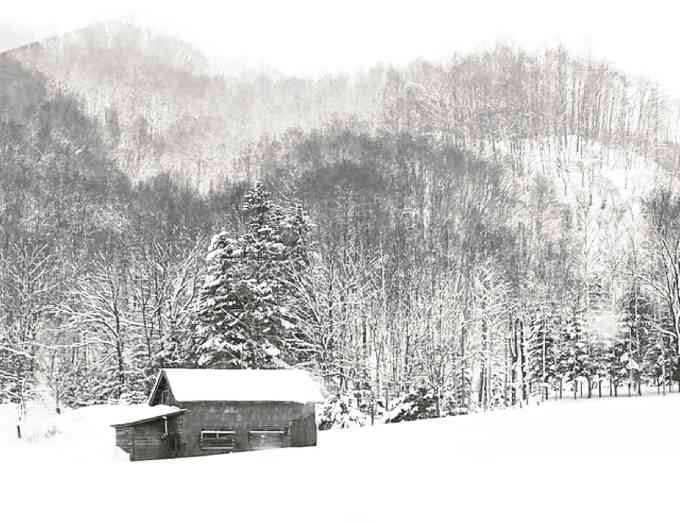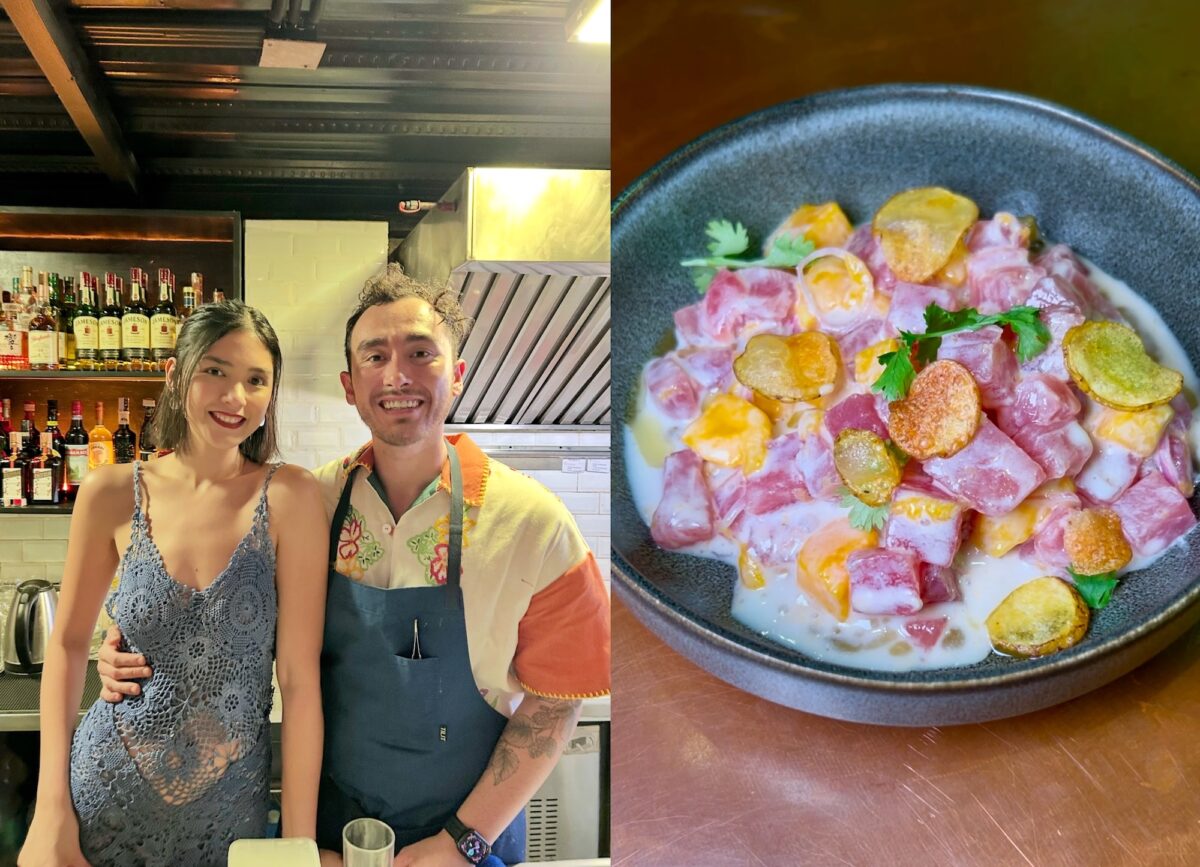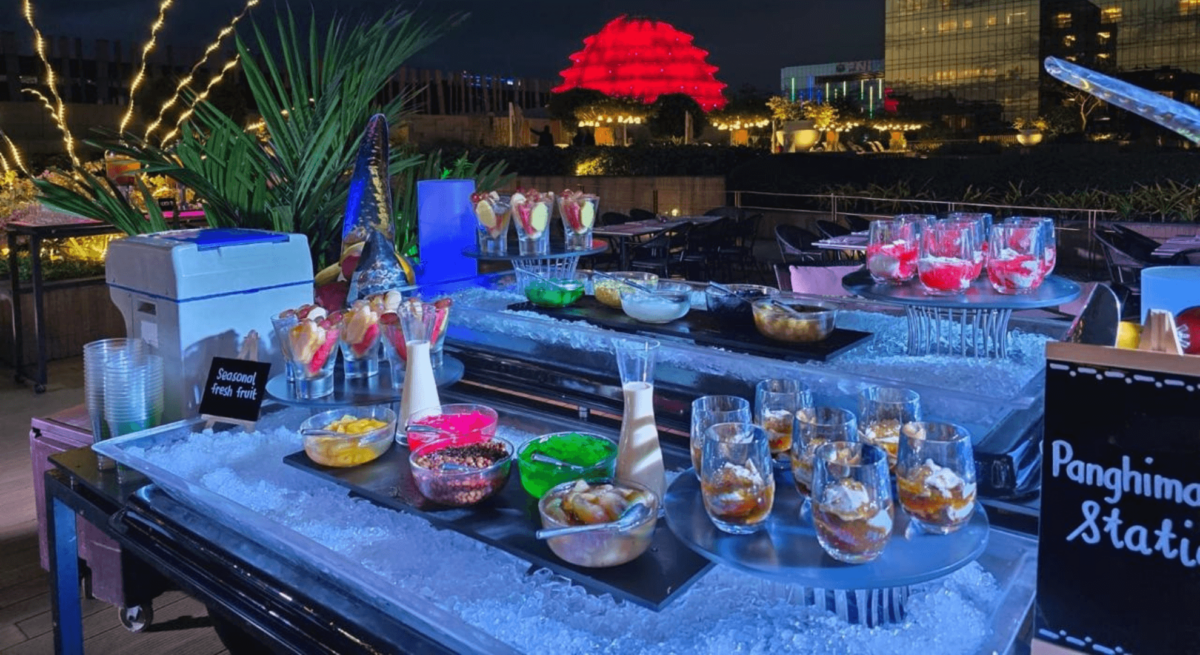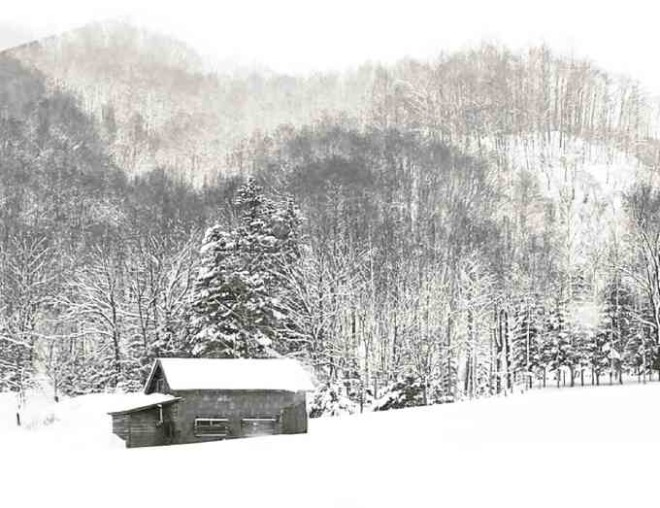
Niseko has become a popular winter destination over the past few years. But to get there isn’t exactly the easiest thing to do.
Niseko is in the Abuta District, Shiribeshi Subprefecture in Hokkaido, Japan. It is around 50 kilometers west of Sapporo. From Manila, it’s two hours to Hong Kong with a one-hour layover, then a four-and-a-half-hour flight to Sapporo.
From there, it’s a two-hour car ride to Hirafu village, a part of the Kutchan municipality and Niseko itself. Assuming there are no delays, no monster snowstorms or anything of the sort, that’s nine and a half hours of travel time.
Last December, I had friends who were stuck at the Chitose airport for two days because of a massive snowstorm. There are other routes one can take, though this seems the quickest. So, even in the best of circumstances, you travel from early morning until night, arriving in Niseko past dinner time.
However, once you’re there, it’s magical.

Powder-fresh snow falls almost continuously. I’m told this is because of its northern location and the seasonal winds that come from Siberia. The village sits in the shadow of the majestic volcano, Mt. Yotei, on one side with its almost perfect cone (assuming the clouds part long enough to give you a glimpse of it). Mt. Yotei is sometimes called the Mt. Fuji of Hokkaido. On the other side to the north is Niseko Annupuri.
Hirafu is a village that looks like a winter wonderland with the ski slopes lighting up the night sky. The village is dotted with hotels, time-share apartments, excellent restaurants, bars and convenience stores. There are public and private onsens (natural hot spring waters) that are extremely popular because people believe they have healing powers due to the mineral content found in the hot spring waters. For those who want to relax without an onsen, there are spas and walk-in massage parlors to soothe weary muscles after a day of intense ski runs.
There is something for everyone here, even nonskiers like me. While my family and friends enjoy days on the ski slopes, I explore the village and try out the different restaurants. One restaurant I particularly want to try is the famous Sobatei Rakuichi located 20 minutes away from Hirafu village by taxi ride.
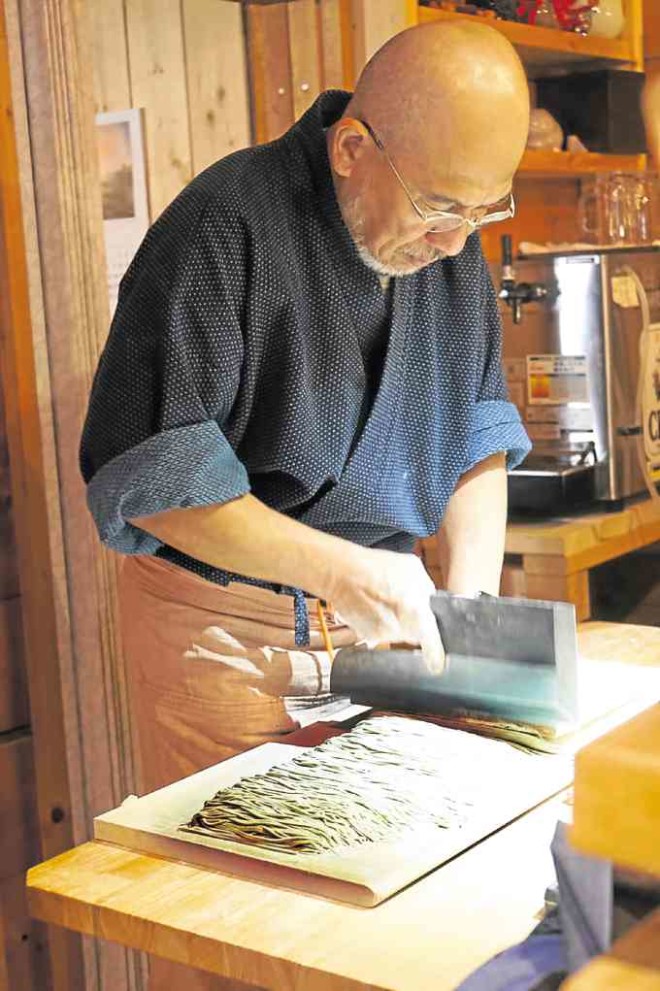
Michelin
Rakuichi opened in 2000, helmed by soba master Tatsuru Rai and his wife Midori. In 2012, it got a Bib Gourmand rating in the Michelin guidebook. I’m told that dinner is out of the question as it requires reserving months in advance. So I aim for lunch which takes no reservations. Coincidentally, it was on the “No Reservations” show of Anthony Bourdain where I first learned about Rakuichi.
Rakuichi opens at 11:30 a.m. each day. With two friends, we decide to leave Hirafu at 10:45 a.m., to get there in time to claim a seat. We drive through snowy roads lined with beautiful trees covered in fresh white powder. The temperature is a few degrees below zero. As we get there, the sun is shining— beautiful blue skies all around.
We arrive in this slightly hard-to-find place and see a little wooden archway welcoming us. We step through the archway that leads to a wooden walkway and in front of us is a quaint little rustic house made of wood and glass, perched on low stilts. This is Sobatei Rakuichi.
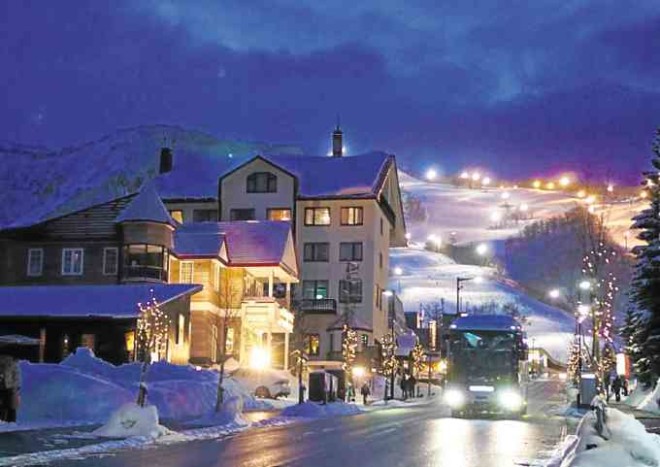
‘Momentary space’
Though I know we are not in the middle of nowhere, there is a feel of splendid isolation and silence as we make our way on the wooden walkway that looks out on a white field and trees covered in snow. I stand and stare for a moment at this vast winter landscape that is breathtaking. I remember reading on a blog that Rakuichi can mean “the quintessence of relaxation and enjoyment in a momentary space.” Such an apt description of where I stand.
I get to the door and see a sign up sheet hanging. I know that Rakuichi seats only 12 people at a time. I see eight names already ahead of us. The three of us make 11. We are lucky to be in the first batch of diners for the day.
As we wait the 20 minutes before opening, many others start arriving. Looking at the building, I am charmed by the way it is built entirely of wood. I am told it was built by the Soba master himself and his wife with their two sons. I love the feel of the place as I walk around outside on the walkways. Once the doors open, I see that the same homey rustic charm continues inside.
As with most restaurants in Japan, shoes off is a policy. I love all the slippers that are provided for the guests. Little by little we are ushered in according to our numbered reservation on the list. The restaurant is small—counter seating with just 12 coveted chairs.
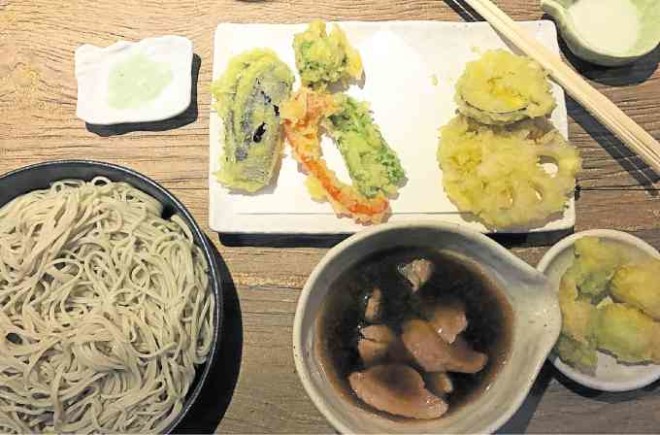
Mesmerizing
We are greeted by chef Tatsuru’s wife, Midori, who is dressed in a classic, traditional kimono. She smiles as she welcomes us.
We watch as the soba master enters the preparation area just in front of us and starts to work his magic. There is an American couple seated next to me. They speak in hushed, reverent tones and oohh and aahh with every movement he makes.
He is mesmerizing to watch. It is almost like a dance. He begins with a mound of buckwheat dough in a big black bowl that he starts to knead over and over. I’m told the buckwheat he uses comes from Niseko itself, and the water he uses to cook the buckwheat with comes from the spring waters that Niseko is famous for also. He transfers the dough to a flat wooden table and starts to roll it with a long, thin wooden rolling pin. Everything looks genuinely authentic, from his tools to his clothes to the room we are in. Like we have stepped back in time. Then of course, I notice he is wearing an Apple watch! We are instantly back to the future!
He continues rolling the dough until it is paper-thin flat. Once it is flattened to his liking, he folds it over and starts to cut it with a menkiri, which means noodle cutter or soba kiri (specialized for cutting soba noodles). It’s a noodle blade that is sharp enough to cut through many layers of dough. The soba kiri has a long blade that is the same as the length of the handle.
He cuts against a komaita, a cutting board that goes on top of the soba dough, allows him to cut a precise straight edge and guides his knife as he continues. He cuts methodically, slowly, little by little the thin, perfect strands of noodles appear as his blade cuts and moves back and forth a little at a time. It is almost hypnotizing to watch him do this.
Once he has cut everything, he puts the noodles in a flat woven basket and starts to divide them into batches. He then takes the freshly made noodles into the kitchen to cook them. And then I realize why he accepts only a very limited number of people for lunch and dinner. This whole process is only for the first six people. Once they are served, he comes back and starts over again for the next six and so on. He will do this process five times during lunch to feed the 30 people accommodated for this lunch seating.

Menu
While the first batch of noodles is cooking, a young server in a kimono comes over and gives us our menu as she sets up our place settings. The lunch menu is limited. Four kinds of soba: 1. Classic cold soba with cold soup, mountain yam, wasabi and green onion; 2. Classic hot soba in hot soup with green onion; 3. Cold soba with hot duck soup served with duck meat, mountain yam and green onion tempura; 4. Hot duck soba served with duck meat and green onion tempura. There is also a side dish of the season’s vegetable tempura.
I ask her what she recommends. She says the best is cold soba with the hot duck soup, so we order that and a side of tempura. I have a Japanese ginger beer and my friends have their sake.
We watch as chef Tatsuru comes out again and does his soba-making ritual all over again. It is as mesmerizing and hypnotic the second time around.
Our vegetable tempura is served simply, without sauce. Instead we are given green tea salt to dip the tempura in.
What a marvelous combination that is! Compared to wet tempura dipped in sauce, dipping it in green tea salt brings out deeper flavors and gives me more crunch than ever before. The batter is so light that I close my eyes in appreciation of the first bite. The tempura is fried precisely the way it should be—crisp, light and without oily residue or taste.
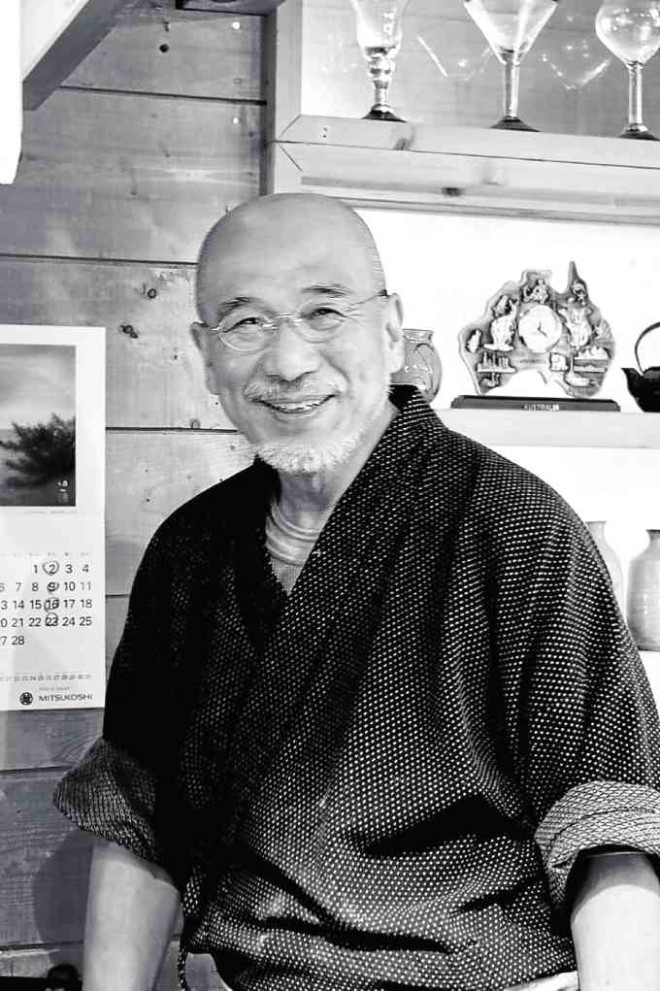
Cold and hot
At last our soba orders are placed before us. I try a noodle alone first and taste a nutty flavor from the buckwheat. I dip the noodles in the hot broth to coat them and take a bite. The cold and hot mix very well! The broth is slightly sweet, salty and with no gamy flavor that sometimes accompanies badly cooked duck. The duck slices in the broth are delicious and I alternate bites of noodle, duck and the green onion tempura.
The mountain yam is supposed to be mixed into the noodles but this is one item I don’t really love in the dish, so I set it aside. As I finish up my noodles there is soup left. But the broth alone is a bit too strong in taste.
Midori comes over and pours soba water into my remaining soup. I lift the bowl to my lips and drink. It’s as if the taste has changed completely—the nutty soba flavor tempering the duck broth. A wonderful way to end my meal.
Copenhagen
I tell chef Tatsuru the meal is excellent and that he is amazing to watch. He smiles shyly and gives me a sheepish grin as he says, thank you, almost embarrassed by the praise. When I ask if I can take his photo, he again seems embarrassed and shy but gives me a smile. He is quiet and unassuming, humble in his craft.
He is one of the best soba masters in Japan. He is so skilled at his craft that he was invited in 2014 by Rene Redzepi of Noma restaurant in Copenhagen to a food symposium there. Chef Tatsuru and his wife did a live demonstration on the art of making soba. (This clip is available online.)
As we get ready to leave, a young lady rushes in wearing a bunny suit onesie, obviously coming straight from the ski slopes. She says almost out of breath, “Did I make it? Am I too late?” Unfortunately, she is. The 30-person cut-off mark for the day is done.
I’m glad I decided to come here even though it’s quite a distance from Hirafu. The meal made me love soba even more and have a new appreciation of the whole art of making soba. There have been many meals I have had that linger in my memory. This meal is no exception. It wasn’t just the excellent food that made the meal so perfect. It was the ambiance, the precision of making noodles and the passion behind it—the traditional way of making things, slow and purposeful; the place’s authenticity; the rustic charm. The list goes on.
It was such an honor to watch a master at his craft.
So if you ever find yourself on a snowy day in Niseko, make time to go to Rakuichi, it will definitely be well worth the trip. —CONTRIBUTED

